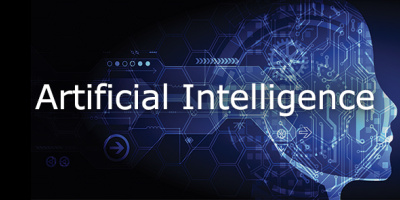Adapting your business to use artificial intelligence applications isnꞌt a matter of simply adding a new software package. Despite its potential benefits, AI can require significant changes to staff attitudes and corporate culture to be successful.
Forward-looking enterprises need to be considering adopting at least some aspects of AI, not because itꞌs in vogue but because your competitors are likely eyeing it if they arenꞌt already using it. Customer-facing services using AI are becoming common, critical business-information analysis apps are at work behind the scenes if not completely up front, and other AI apps are helping employees become more efficient in carrying out routine operations. That’s to say nothing of AI helping organizations find new lines of business, streamlining formerly thought- and labor-intensive procedures, and fundamentally altering business models and corporate culture.
Most enterprises are already familiar with the sometimes-unforeseen ways in which simply adopting a new software package for any basic business function can be influential in unexpected ways. Not everyone realizes the extent to which AI (and other digital transformations) can represent even more profound changes. But far from this being an excuse to postpone consideration of embracing AI more fully, executives, line managers, and AI types need to face the strain and consider AIꞌs benefits and challenges in a clear-eyed way. That means accepting in advance that there will be alterations to the standard ways of doing business and being ready to make necessary preparations.
Getting the People Part Right
Existing employees have to be on board with even a pilot project for AI; otherwise, the change has excellent prospects to fail. Traditionally, the first employee reaction to any type of business process automation (BPA) is to think, in their heart of hearts, "Sooner or later, this is going to cost me my job." An AI project will cause that reaction in people who perhaps previously thought their job couldn’t be automated. An attitude of fear can cause anything from lack of enthusiasm to overly quick criticism of initial setbacks to outright sabotage (whether consciously or unconsciously). Itꞌs managementꞌs job to look ahead and be ready to frame any AI adoption as an opportunity for existing employeesꞌ work to become both easier and more personally rewarding. That requires imagining how different employeesꞌ jobs are going to change for the better if an AI project succeeds, and presenting a vision of what that might look like right from the first moment the subject of AI is even broached. This may require some outside consulting help, as often execs and managers are used to being focused on day-to-day problems of making existing processes work rather than spending much of their thinking time on how processes might be different.
A second aspect of a people approach is that, because AI apps provide the most benefits when there is a large data set with which to train them, one of the first hard truths everyone will need to accept is that the data your enterprise has available may be inadequate and likely contains some biases you canꞌt even see. Part of the answer to this is that youꞌll have to rely on people—the people who work most closely with the data for whatever aspect of the business youꞌre going to automate first—to become subject-matter experts (SMEs). These people are the ones who youꞌll have to empower to think more imaginatively about what other data and data sources you could be looking at to better train your AI app. Here again, an outside consultant in addition might be helpful.
Another use for an outside consultant is to have someone who has experience analyzing other enterprisesꞌ processes help you decide what business functions are best for any BPA alteration, including adopting AI. One of the most common reasons for failure of AI projects is trying to take on too much scope for a pilot project, which if it fails, sets a negative tone for even trying to use AI for something different later.
The Psychological Impact of the Pilot Project
Those experienced in AI project adoption, while not unanimous, largely recommend starting with a pilot project that focuses on some business process that is currently labor-intensive and could have the greatest impact. High-volume tasks that have lower consequences for failure are good possibilities.
Another strong idea is to pick a process that enables its redesign with a focus on the people who carry it out, rather than centering it on a software app that looks attractive or a process that is simply the pet project of a single management type.
One way to start is to propose two or three potential pilot project ideas, create prototypes for those specific examples, then evaluate which idea to start out with. The goals of the selected project should be concrete rather than general, for example, "cutting the number of phone calls each employee must handle daily" rather than "streamlining the order process." Establish measurable goals for the pilot, such as "reducing the average number of calls handled by one employee to 30 a day after the first month and 20 a day after the second month," and then be open about what goals were actually met. Even if projections arenꞌt met, showing a positive tendency will build confidence that an AI pilot is going to be ultimately successful even if there are some initial snags.
While your designated SMEs will likely have a few ideas for what process might be a good pilot project candidate, or additional data sources to tap right off the bat, someone from outside who doesnꞌt have any vested interest in doing things the familiar old way can help management zero in on one or two processes that would benefit the most from AI to get started with. Then with a successful pilot under the enterpriseꞌs belt, the psychological resistance employees might be feeling (even if it isnꞌt explicitly stated) starts to be overcome and can pave the way to more successes later.
Once you have a prototype pilot and have it working initially, be sure to test it thoroughly before "trying it out" in a production environment. Identifying early problems and resolving them before they can create immediate problems for employees using them will also build employee confidence that an AI problem will not be as threatening as they first assumed.
Start Cultural Change at the Line Manager Level
Managers have to be proactive about setting the stage for success. There needs to be dialog with the SMEs and other front-line employees who already do the tasks that are candidates for AI automation about details of the process the enterprise is considering augmenting with AI. Initial discussions with front-line employees should point out how currently complex operations will be simplified, making time for workers to carry out new tasks that might lay the groundwork for their own potential advancement.
The managers and project leaders will also need to be honest with employees about what effects AI might have on the work environment and be empathetic to employee concerns. This includes creating an accepting atmosphere for job loss and other anxieties to be discussed openly. Such discussion can create the opportunity for arguments to be advanced for why apprehensions arenꞌt justified. As it is, line managers will have to come to terms with their own emotional reactions to the prospects of any AI project. Are they flexible enough to do that?
This can be a cultural change because once started, it will have to become an ongoing habit. Remember, your pilot project isnꞌt going to be the result; itꞌs just a beginning. Executives might have to consider that any managers who arenꞌt on board with this kind of interchange, who are used to giving orders without feedback from below, or who habitually donꞌt share information with underlings might be a serious obstacle to any AI success.
Another critical part of the people angle is gauging whether using AI for any part of the business that is public-facing will have support of your customers. Will they resent having to go through an automated customer service AI before they can talk to an actual person, for example? Or do some of your best customers actually wish your processes were even more automated and might think your initial AI use is too little too late? This aspect also needs some examination and can happen only if someone in the organization is willing to have frank discussions with at least some of these potential participants. Relying exclusively on your salespeople to do it might be a problem if they donꞌt fully understand the implications of an AI project or are concerned that being too open with customers about changes might affect their commissions.
Combatting the Effect of Data Silos
Another situation that could have an impact on an AI project as well as company culture is how fond your various departments are of keeping their own data in a silo. AI apps, particularly if being deployed on the side of a business that wants to develop more functions and more markets for the enterprise, needs more good data to function well. If your enterprise has a feudal attitude about sharing data outside their fiefs only on a "need-to-know" basis, itꞌs going to be hard to give an AI project enough information to work with effectively.
One way to combat this tendency is to establish cross-functional workgroups that are willing to share what they know and cooperate across currently established organizational lines. Another is to work to develop a roadmap that goes beyond a pilot project and forecasts benefits of cross-department or cross-functional cooperation. Here again, the psychological aspects of getting employees in different groups to see the potential benefits in sharing data within the enterprise in the widest possible ways can be critically important.
Employee Buy-in Is Fundamental
Another aspect to consider in these days of COVID is whether, and how, an AI project might affect employees who work remotely or who have learned out of necessity that they actually prefer to work remotely. For example, if AI might help remote people access more information faster, thereby making their jobs easier, those people might be a source of added support and ideas for changes in processes and procedures brought about by an AI project.
Obviously, there are other considerations in making an organizational commitment to undertake AI-based modifications to the enterprise. However, getting employee buy-in is a fundamental building block to successful implementation and has to be one of the first aspects undertaken to improve chances of success with any AI adoption.























 More than ever, there is a demand for IT to deliver innovation. Your IBM i has been an essential part of your business operations for years. However, your organization may struggle to maintain the current system and implement new projects. The thousands of customers we've worked with and surveyed state that expectations regarding the digital footprint and vision of the company are not aligned with the current IT environment.
More than ever, there is a demand for IT to deliver innovation. Your IBM i has been an essential part of your business operations for years. However, your organization may struggle to maintain the current system and implement new projects. The thousands of customers we've worked with and surveyed state that expectations regarding the digital footprint and vision of the company are not aligned with the current IT environment. TRY the one package that solves all your document design and printing challenges on all your platforms. Produce bar code labels, electronic forms, ad hoc reports, and RFID tags – without programming! MarkMagic is the only document design and print solution that combines report writing, WYSIWYG label and forms design, and conditional printing in one integrated product. Make sure your data survives when catastrophe hits. Request your trial now! Request Now.
TRY the one package that solves all your document design and printing challenges on all your platforms. Produce bar code labels, electronic forms, ad hoc reports, and RFID tags – without programming! MarkMagic is the only document design and print solution that combines report writing, WYSIWYG label and forms design, and conditional printing in one integrated product. Make sure your data survives when catastrophe hits. Request your trial now! Request Now. Forms of ransomware has been around for over 30 years, and with more and more organizations suffering attacks each year, it continues to endure. What has made ransomware such a durable threat and what is the best way to combat it? In order to prevent ransomware, organizations must first understand how it works.
Forms of ransomware has been around for over 30 years, and with more and more organizations suffering attacks each year, it continues to endure. What has made ransomware such a durable threat and what is the best way to combat it? In order to prevent ransomware, organizations must first understand how it works. Disaster protection is vital to every business. Yet, it often consists of patched together procedures that are prone to error. From automatic backups to data encryption to media management, Robot automates the routine (yet often complex) tasks of iSeries backup and recovery, saving you time and money and making the process safer and more reliable. Automate your backups with the Robot Backup and Recovery Solution. Key features include:
Disaster protection is vital to every business. Yet, it often consists of patched together procedures that are prone to error. From automatic backups to data encryption to media management, Robot automates the routine (yet often complex) tasks of iSeries backup and recovery, saving you time and money and making the process safer and more reliable. Automate your backups with the Robot Backup and Recovery Solution. Key features include: Business users want new applications now. Market and regulatory pressures require faster application updates and delivery into production. Your IBM i developers may be approaching retirement, and you see no sure way to fill their positions with experienced developers. In addition, you may be caught between maintaining your existing applications and the uncertainty of moving to something new.
Business users want new applications now. Market and regulatory pressures require faster application updates and delivery into production. Your IBM i developers may be approaching retirement, and you see no sure way to fill their positions with experienced developers. In addition, you may be caught between maintaining your existing applications and the uncertainty of moving to something new. IT managers hoping to find new IBM i talent are discovering that the pool of experienced RPG programmers and operators or administrators with intimate knowledge of the operating system and the applications that run on it is small. This begs the question: How will you manage the platform that supports such a big part of your business? This guide offers strategies and software suggestions to help you plan IT staffing and resources and smooth the transition after your AS/400 talent retires. Read on to learn:
IT managers hoping to find new IBM i talent are discovering that the pool of experienced RPG programmers and operators or administrators with intimate knowledge of the operating system and the applications that run on it is small. This begs the question: How will you manage the platform that supports such a big part of your business? This guide offers strategies and software suggestions to help you plan IT staffing and resources and smooth the transition after your AS/400 talent retires. Read on to learn:
LATEST COMMENTS
MC Press Online